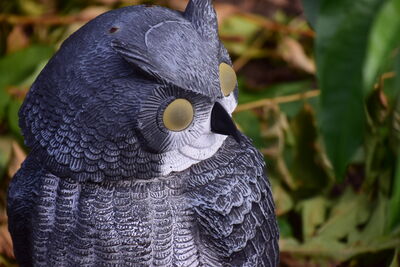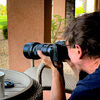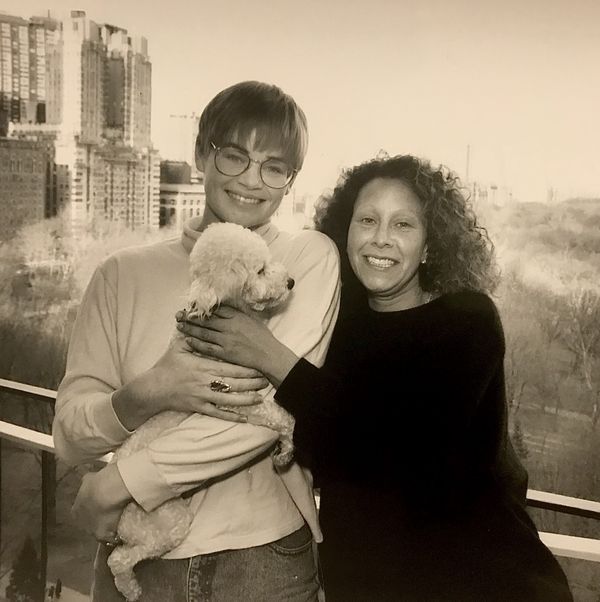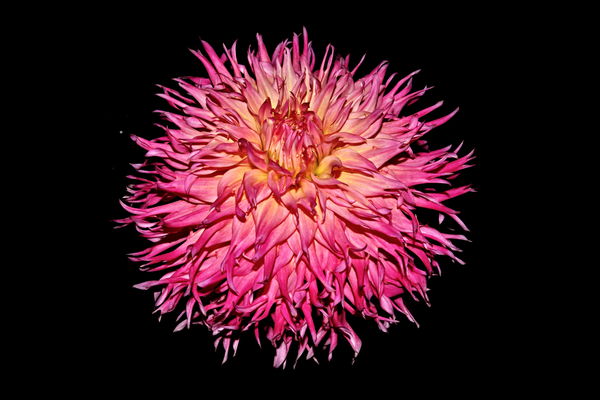On-Camera flash (daylight)
Apr 15, 2021 14:21:30 #
Apr 15, 2021 14:43:44 #
jerryc41 wrote:
If I need a flash, I generally use the built-in. I would avoid buying a camera without one - like Nikon's replacement for my D750.
A built in flash is the worst kind of flash. It is why people hate flash. Not only does it produce flat lighting, but being a very small light source, it produces harsh shadows. Why do advanced cameras intended for professionals seldom, if ever, have a built in flash? Because a professional would seldom, if ever, use one.
Apr 15, 2021 14:51:46 #
DanCal
Loc: Southern California
Fill Flash is very effective when photographing people in outside situations. 95% of my photography revolves around human subjects. I would say at least 75 % of these photos have some sort of flash weather on camera or off.
Apr 15, 2021 15:15:45 #
larryepage
Loc: North Texas area
If flash is "the main thing," I use a CBJR bracket that provides a foot or so of separation and keeps the flash over the lens in either orientation, which gets rid of shadows behind the subject and almost all red-eye. The bracket plus a diffusion dome allow for quite nice lighting of almost any subject at almost any reasonable distance. When I am using balanced fill flash outdoors, I have found that very few of the usual concerns and worries about on-axis (or near on-axis) flash actually create a problem.
For one thing, when shooting people outside, their pupils are almost always constricted. This is because even when they are in the shade, they are looking out into a bright area. I don't ever recall having a redeye problem with fill flash outside, and I always use a hot shoe mounted flash for that. Second, If I am using fill flash, it is usually to correct for light creating awkward shadows because it is coming from an unusual angle. Light coming from somewhere close to the camera is just what is needed to soften those shadows, most of the time.
The other thing I have learned when using fill flash outside is to back off on the ISO, and disable Auto ISO if you use it. The worst thing that can happen in a situation where you are wanting to use fill lighting is to be set at an ISO (or have the camera select an ISO for you) that is so high that the flash doesn't fire or else just "winks" weakly. If you are wanting fill, you need for there to be some fill, so adjust to allow it to occur.
As an aside, when I was volunteering at the local arboretum a few years ago, one of the most entertaining things I watched was photographers who would point their flashes straight overhead for fill. No reflector, no dome, no nothing. Just the air that we were breathing. It was really pretty funny...not sure how there photographs turned out.
For one thing, when shooting people outside, their pupils are almost always constricted. This is because even when they are in the shade, they are looking out into a bright area. I don't ever recall having a redeye problem with fill flash outside, and I always use a hot shoe mounted flash for that. Second, If I am using fill flash, it is usually to correct for light creating awkward shadows because it is coming from an unusual angle. Light coming from somewhere close to the camera is just what is needed to soften those shadows, most of the time.
The other thing I have learned when using fill flash outside is to back off on the ISO, and disable Auto ISO if you use it. The worst thing that can happen in a situation where you are wanting to use fill lighting is to be set at an ISO (or have the camera select an ISO for you) that is so high that the flash doesn't fire or else just "winks" weakly. If you are wanting fill, you need for there to be some fill, so adjust to allow it to occur.
As an aside, when I was volunteering at the local arboretum a few years ago, one of the most entertaining things I watched was photographers who would point their flashes straight overhead for fill. No reflector, no dome, no nothing. Just the air that we were breathing. It was really pretty funny...not sure how there photographs turned out.
Apr 15, 2021 15:34:19 #
larryepage wrote:
If flash is "the main thing," I use a CB... (show quote)
Thanks for your tips for avoiding red eye.
It’s also amusing to see someone take flash photos of a movie.
Apr 15, 2021 17:27:15 #
wide2tele wrote:
Maybe I'm just missing the topics but it appears daylight flash is rarely used.
How many people go out with a hot shoe mounted flash attached to their camera in daylight?
Why do you or why do you not?
How many people go out with a hot shoe mounted flash attached to their camera in daylight?
Why do you or why do you not?
For humming birds and some macro shots I use my hot shoe mounted flash.
The power ratio settings really make the difference.
Apr 15, 2021 17:44:59 #
wide2tele wrote:
Depends on the experience of the photographer. An experienced photographer will still pick if flash was used majority of the time.
Fill is easy to detect. The photo taken in conditions that need fill, but suffering no ill effect from such conditions, is a photo made with fill light.
Those NOT able to instinctively recognize such conditions, at a glance, are those who will say you can’t always identify a fill flash shot.
It’s not a nuanced issue. You never get any good looking shots in bad conditions unless you impose a fix for it. If the bad condition is bad light, the only fix is to impose some good light. If not flash, the good light can be a reflector.
Apr 15, 2021 17:55:20 #
Craigdca wrote:
Thanks for your tips for avoiding red eye.
It’s also amusing to see someone take flash photos of a movie.
It’s also amusing to see someone take flash photos of a movie.
Or see the flashes go off in a football stadium
Apr 15, 2021 18:51:43 #
On-camera flash oftentimes gets an undeserved bad rap. So, yesterday, I decided to write one of my "too lengthy" epic tutorials about on-camera flash main light and fill techniques because I feel that many folks, that are otherwise savvy shooters, have never studied, learned, mastered some of the simple but very effective flash techniques that can yield excellent and natural results void of all the usual preconceived or misconceived bad aspects of flash usage.
So, yesterday, on or about the 5th paragraph, the computer crashed and the hard drive had to be replaced! I spent most of the day reconfiguring the repaired computer. I started to regenerate the project and on the 4th paragraph, the entire system dumped- unsaved and gone off to oblivion. Lots of cussing in 3 different languages ensued! I fixed the issue!
The spirits, the photography gods or the universe does not want me to write about this topic. Too bad! After over half a century of the press, weddigs, and certain kinds of shooting that has to be done singlehandedly, quickly, and where the is no time, space or circumstances that would accommodate a more sophisticated and complex lighting system, I have some old "tricks of the trade" that can enable some aesthetically pleasing results with a single Speedlight or strobe lamphead mounted on the camera.
I'm afraid to start the post again- perhaps this time the computer will cause a short circuit and burn the house down! If anyone is really interested, I will be encouraged.
So, yesterday, on or about the 5th paragraph, the computer crashed and the hard drive had to be replaced! I spent most of the day reconfiguring the repaired computer. I started to regenerate the project and on the 4th paragraph, the entire system dumped- unsaved and gone off to oblivion. Lots of cussing in 3 different languages ensued! I fixed the issue!
The spirits, the photography gods or the universe does not want me to write about this topic. Too bad! After over half a century of the press, weddigs, and certain kinds of shooting that has to be done singlehandedly, quickly, and where the is no time, space or circumstances that would accommodate a more sophisticated and complex lighting system, I have some old "tricks of the trade" that can enable some aesthetically pleasing results with a single Speedlight or strobe lamphead mounted on the camera.
I'm afraid to start the post again- perhaps this time the computer will cause a short circuit and burn the house down! If anyone is really interested, I will be encouraged.

Apr 15, 2021 18:54:26 #
photoman022
Loc: Manchester CT USA
I frequently use an on-camera, external flash when photographing outside. I use them for flower shots, portraits, and sometimes (very infrequently) landscapes where I want to highlight something in the foreground. I will use them in snowstorms (at a slow shutter speed) to highlight the falling snow.
I use YN460 flashes; they are adjustable (and extremely affordable). I will usually shoot at 1/8 to 1/32 power. That little kiss of light will improve a photograph. In closeup photography, I can shoot at f/16 or smaller and have a nicely exposed subject and a very dark background.
I use YN460 flashes; they are adjustable (and extremely affordable). I will usually shoot at 1/8 to 1/32 power. That little kiss of light will improve a photograph. In closeup photography, I can shoot at f/16 or smaller and have a nicely exposed subject and a very dark background.
Apr 15, 2021 20:32:41 #
wide2tele wrote:
Maybe I'm just missing the topics but it appears daylight flash is rarely used.
How many people go out with a hot shoe mounted flash attached to their camera in daylight?
Why do you or why do you not?
How many people go out with a hot shoe mounted flash attached to their camera in daylight?
Why do you or why do you not?
I carry my SB 400 with me even outside and use it when a little fill light is needed. Brightens up what could be a rather drab scene and also removes unwanted shadows. Very quick to attach and remove.
Apr 15, 2021 21:04:14 #
Probably a 283 and small white bounce card on a small Nikon with a 28-70/4.0 ... cuz I was 3 hours from home base by Amtrak, and I know that would be my compact kit at the time for PR stuff in NYC when traveling by train. This is an off hours personal snap, not the PR job, but the job dictated the gear.
Background sunlit but no sun on the subjects. I always like the 283 (or 285) cuz it’s easier to hit the lighting ratio than with the Nikon flashes (which are always TTL auto flash). I would estimate this to be shot at f/8 with the 283 set for f/4. I usually used that 4:1 ratio.
.
Background sunlit but no sun on the subjects. I always like the 283 (or 285) cuz it’s easier to hit the lighting ratio than with the Nikon flashes (which are always TTL auto flash). I would estimate this to be shot at f/8 with the 283 set for f/4. I usually used that 4:1 ratio.
.
Apr 15, 2021 21:18:26 #
User ID wrote:
Probably a 283 and small white bounce card on a sm... (show quote)
The 4:1 ratio seems to work here. Thanks for mentioning it.
Apr 16, 2021 08:14:19 #
E.L.. Shapiro wrote:
On-camera flash oftentimes gets an undeserved bad ... (show quote)
Sorry about your computer luck, but I'd be really interested in tips for on camera or hot shoe flash. Frankly, I use the built in flash on my Pentax K3 quite a bit and have enough control to get some decent shots with it. The attached flower (Dalhia) photo was taken at a local Mall flower show, using the built in flash to do low key photography and I'm happy with the results. I also own a hot shoe flash that sees some use, but do not have remote firing capabilities. So, tips for on camera flash use would be interesting and appreciated, but don't let me be the cause of more computer problems.
Apr 16, 2021 15:52:46 #
pdsilen
Loc: Roswell, New Mexico
I only use my built-in flash when I'm shooting for a client who isn't looking for high quality and only needs multiple photos for the desired subject(s). And turnaround time is of the essence.
If you want to reply, then register here. Registration is free and your account is created instantly, so you can post right away.








